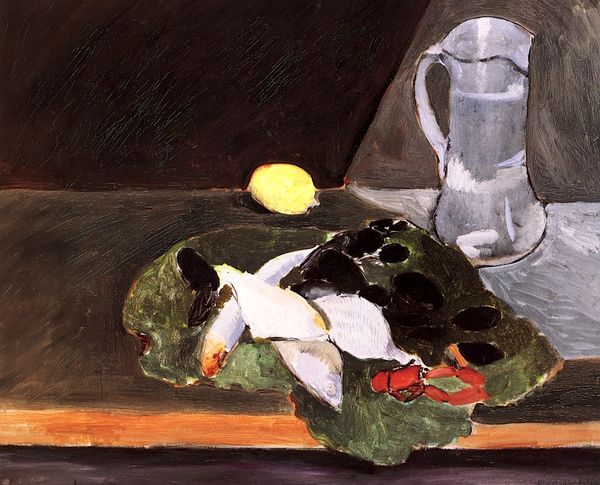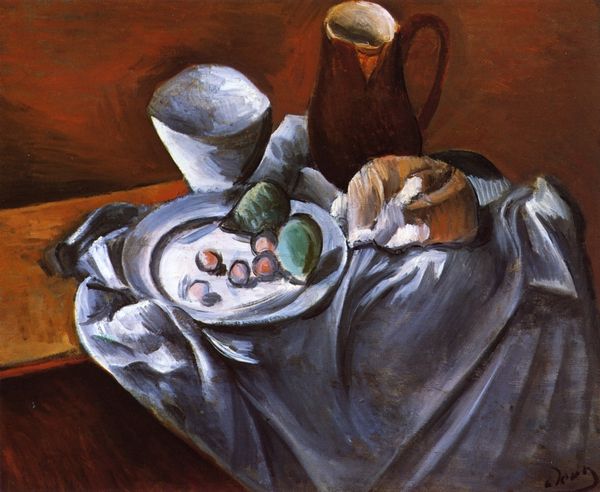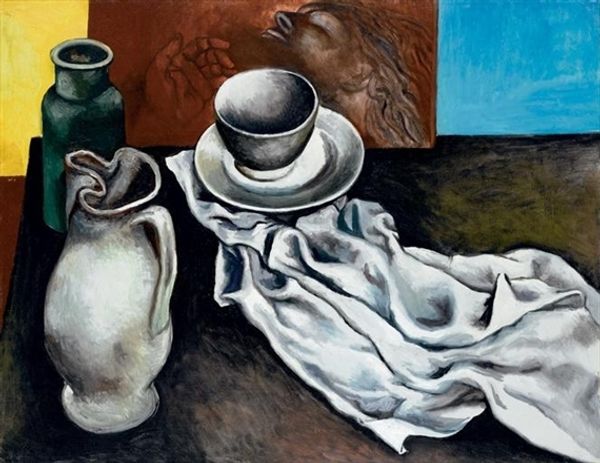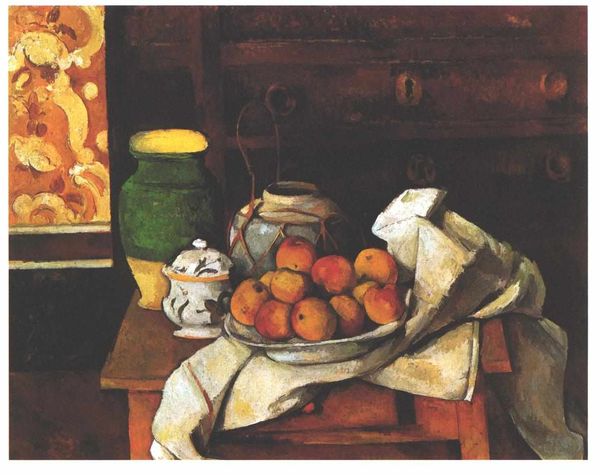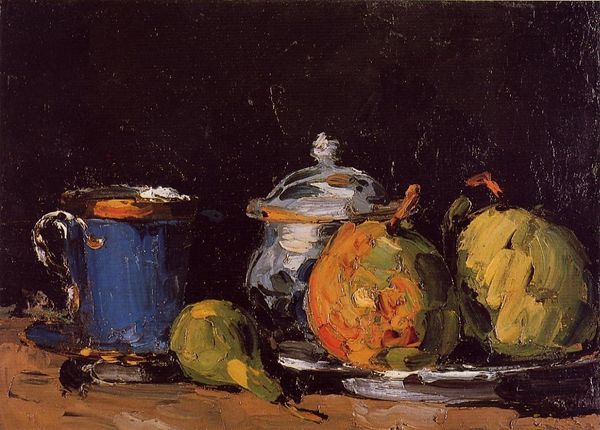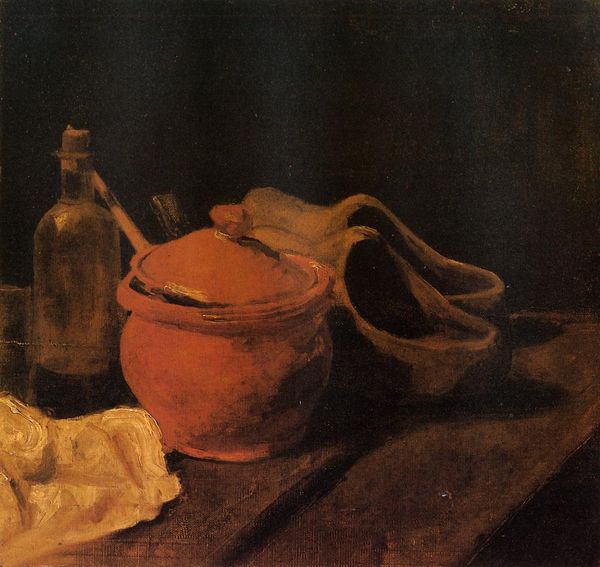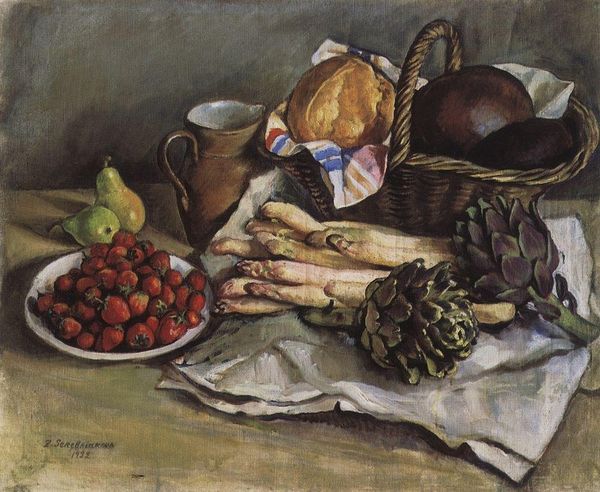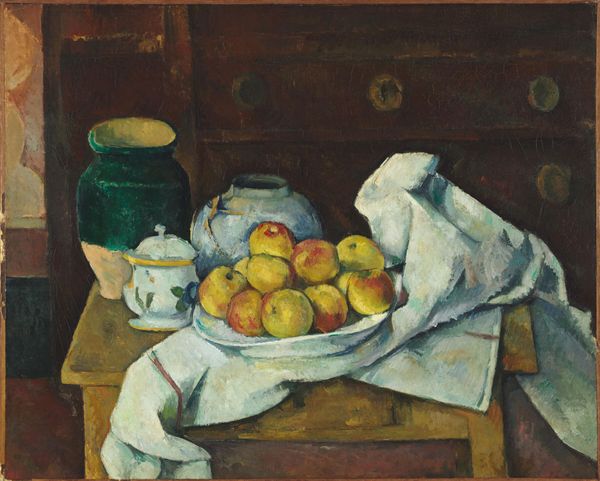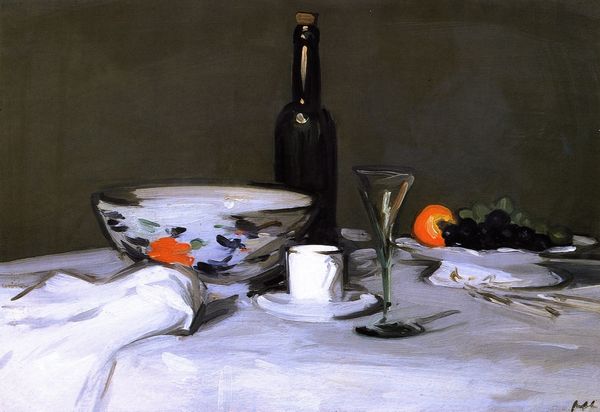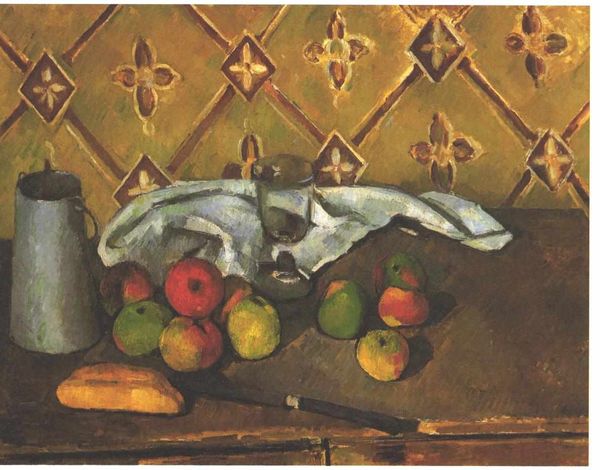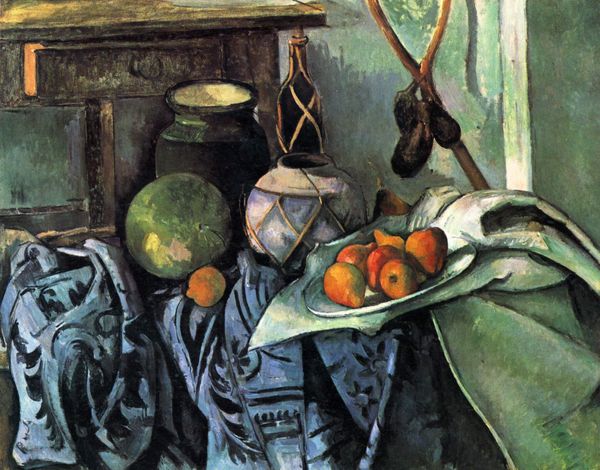
Copyright: Public domain
Paul Cézanne’s still life, featuring a green pot and pewter jug, presents a fascinating array of everyday objects imbued with symbolic weight. The fruit—often an apple—is a prominent symbol, echoing the forbidden fruit of the Garden of Eden. We see its repetition across centuries, from classical paintings to modern advertisements, as a symbol of temptation and desire. Consider Titian’s rendition of Eve offering the apple to Adam; the fruit is a visual echo, yet Cézanne strips it of its overt moral narrative, leaving only the object. This echoes back to ancient Greek art; apples were a symbol of love and beauty, associated with Aphrodite. The cloth draped across the table is reminiscent of burial shrouds or cloths covering sacred objects, invoking a sense of ritual. Emotionally, the arrangement conveys a quiet intensity, each element contributing to a tableau that transcends mere representation, delving into deeper layers of cultural and personal significance. This motif of fruit, in its non-linear journey through art history, reminds us how symbols resurface, evolve, and acquire new meanings in different epochs, carrying the weight of collective memory.
Comments
No comments
Be the first to comment and join the conversation on the ultimate creative platform.
